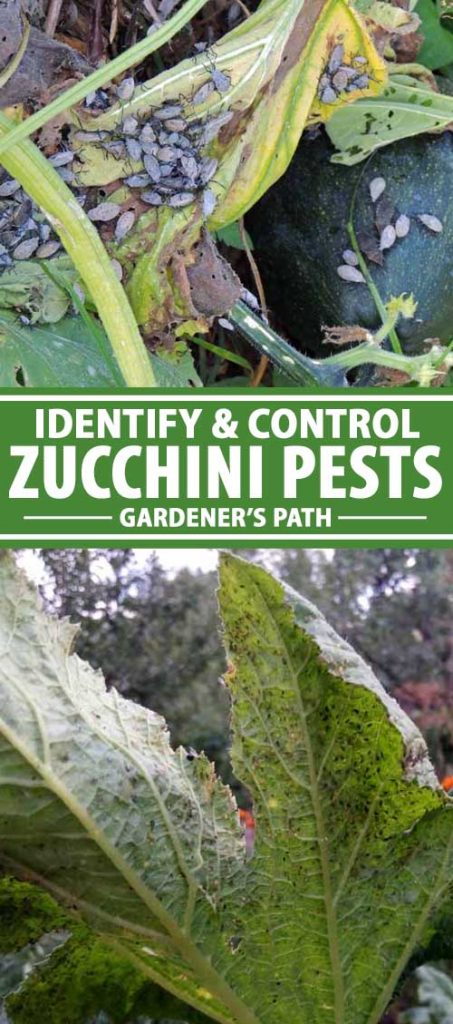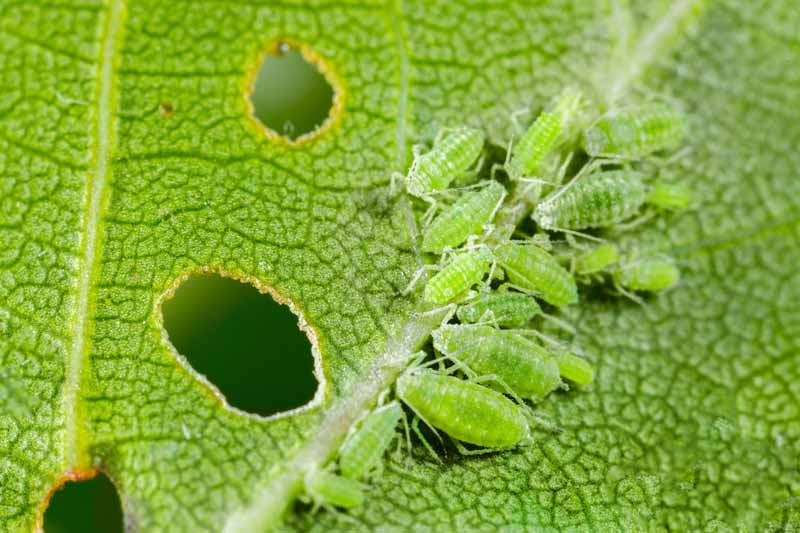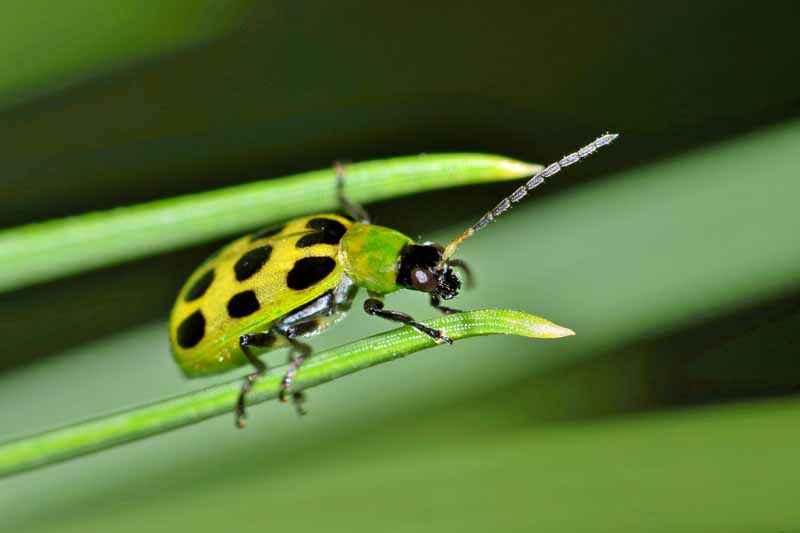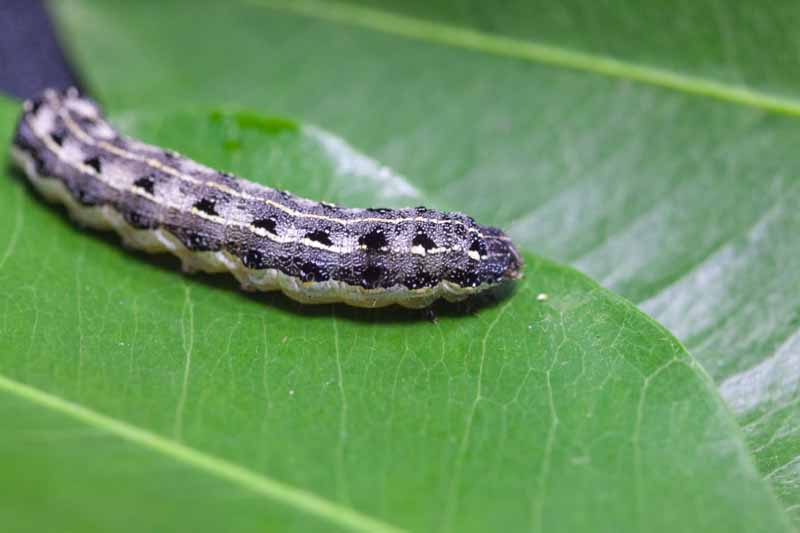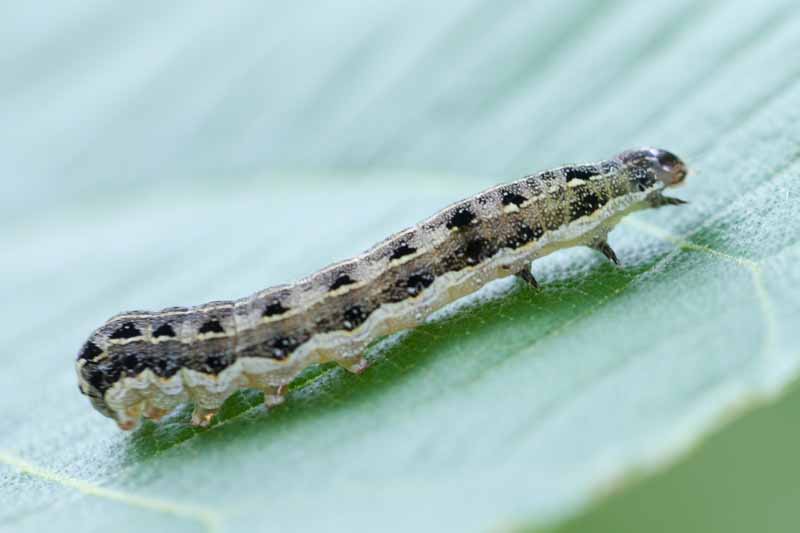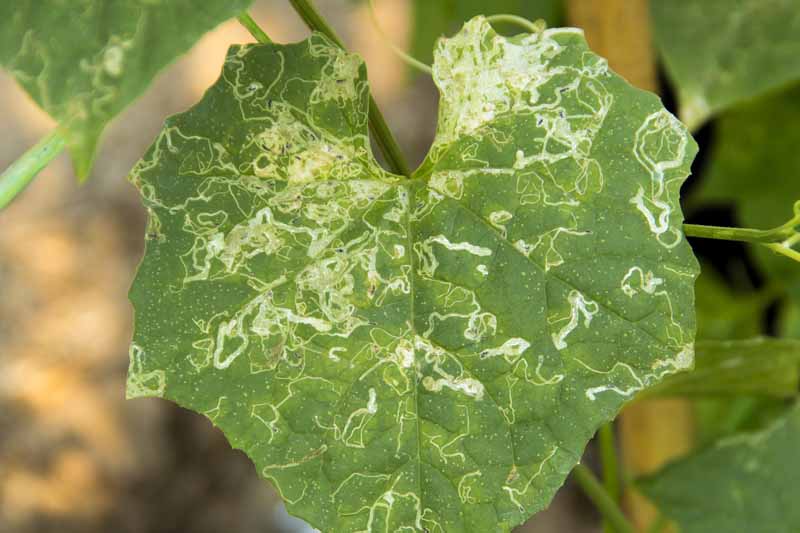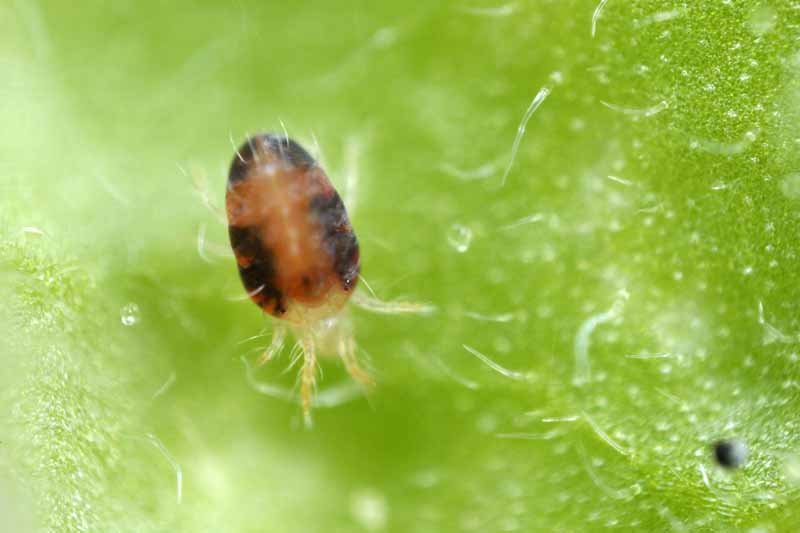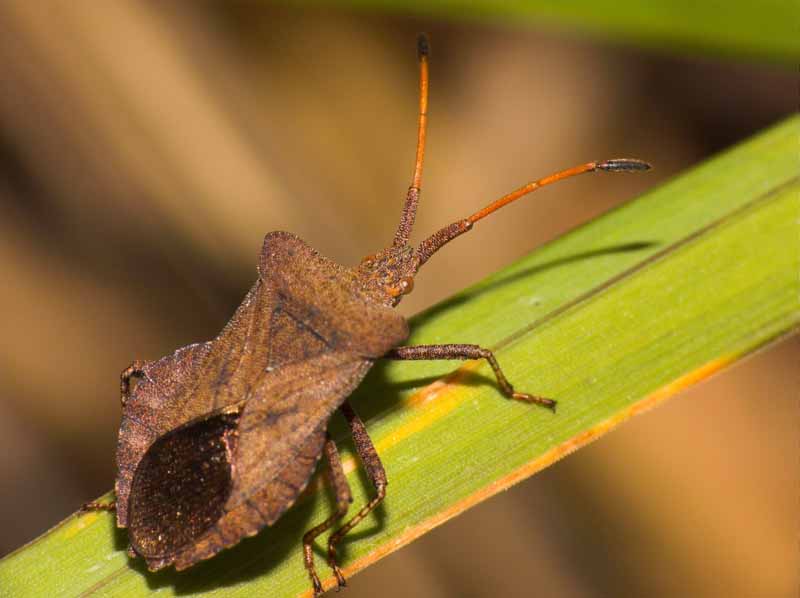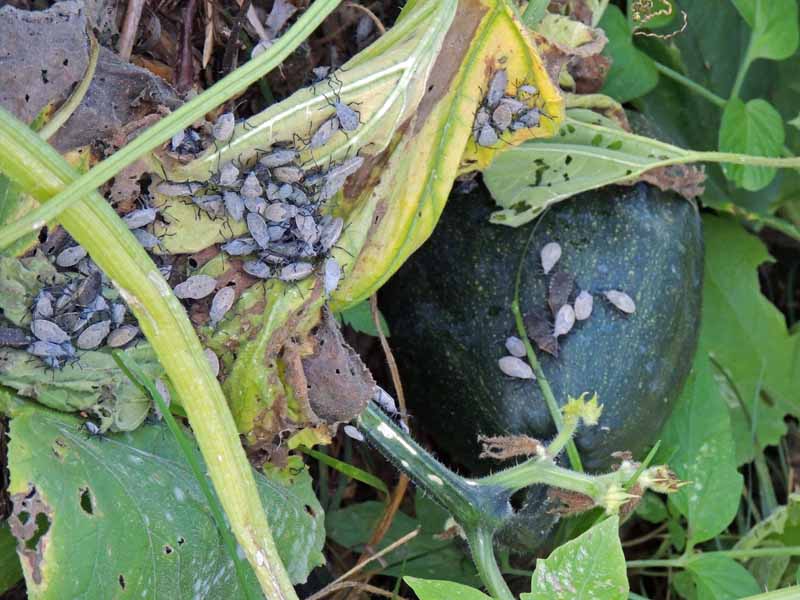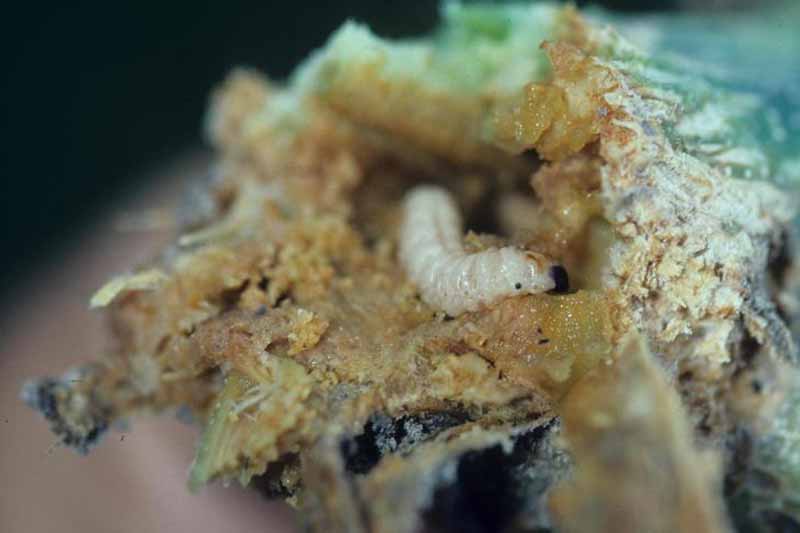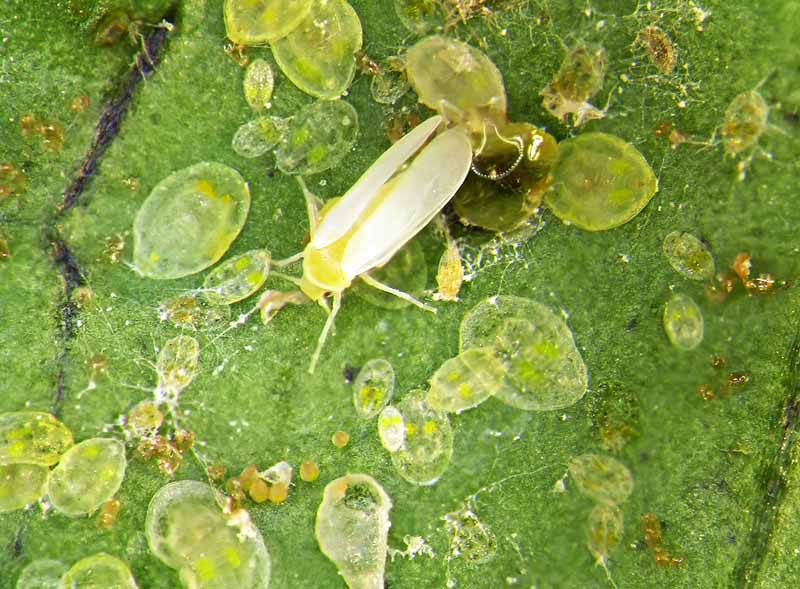And as much as you enjoy the freshly-plucked fruit, there are several garden pests who feel the same way about nibbling on your zucchini plants. From the tiny aphid to the colorful cucumber beetle, there are a lot of creepy crawlies around that can’t wait to get their teeth into your veggies. Scared? Don’t be. While the list of pests that can attack zucchini may seem long, with some quick action, most of them are easily dealt with. We link to vendors to help you find relevant products. If you buy from one of our links, we may earn a commission. If your zucchini plants are suffering from pest damage, it’s likely to be caused by one (or more!) of the following:
1. Aphids
Aphids are one of the most common garden pests out there, and zucchini plants aren’t immune to these sap-sucking pests. These tiny 1/8-inch long bugs may be black, red, green, yellow, brown, or pink, depending on the type.
They have pear-shaped bodies with long antennae, and are usually wingless. A single aphid is no big deal, but in groups, they can stunt or damage plants. These bugs breed profusely, the eggs overwinter and hatch in the spring. During the summer months, females can produce up to 12 live offspring a day. Zucchini plants impacted by aphids may be stunted or have curling, yellowing, mottled, or dry leaves. The honeydew left behind by aphids can lead to sooty mold, and can also attract ants. Because they’re so small, you may not notice them until you have a large infestation, or you see signs of damage on your plants. They don’t always cause much damage, but while you might be tempted to leave them, keep in mind that they may spread disease.
How to Manage Aphids
The earlier you deal with the problem, the better the chance that your plant will escape relatively unscathed. The first step is to spray plants with a blast of water from the hose to knock the pests loose. Sometimes, they will leave the plant for a different one. You should also keep your garden free from weeds, so they don’t have a place to hide. Beneficial insects such as ladybugs, syrphid flies, lacewings, and parasitic wasps are all natural enemies of aphids, so encourage them to take up residence in your garden. You can do this by planting nectar-rich flowers, such as anise hyssop, black-eyed Susans, or bee balm, and herbs like fennel, Queen Anne’s lace, caraway, mallow, and cilantro. If that fails, you can try neem oil or insecticidal soap. Be sure to spray the top and bottom of the leaves and repeat the application every few days for two weeks. Also, limit fertilizer use because according to experts at the University of California’s Integrated Pest Management Program, too much nitrogen can favor aphid reproduction. Applying a reflective mulch around the plants can help to repel aphids. There are chemical controls available, but it isn’t likely that an aphid population will kill your plant altogether. As noted by horticulturalists at the University of California, pesticides may kill off the pollinators and beneficial insects that your garden needs to thrive, so I recommend avoiding these methods. Learn more about managing aphids in your garden.
2. Cucumber Beetles
There are two types of cucumber beetles: spotted, Diabrotica undecimpunctata howardi (also known as the southern corn rootworm), and striped, Acalymma vittatum. Both are similar in appearance and the type of damage they can do, and you should deal with them both the same way. As Ric Bessin, extension specialist at the University of Kentucky College of Agriculture reports, cucumber beetles are a major pest for zucchini crops, not only because of the damage they cause, but because they spread the deadly bacterial wilt disease. These pests feed on leaves and stems, and a large infestation can defoliate plants. They overwinter in protected areas. The larvae begin feeding underground, and then emerge in the late spring or summer to find a plant to nibble on.
How to Manage Cucumber Beetles
Keep weeds away from your garden because they can act as hosts for these insects. To discourage adults from laying eggs, lay down dark landscaping fabric around plants. If you have the room, plant ‘Blue Hubbard’ squash as a trap crop. Cucumber beetles, squash bugs, and squash vine borers prefer this plant to zucchini, so plant some next to your zucchini plant, or at the ends of a row of zucchini. The plants should be spaced between 3 and 8 feet apart when mature, so that they have enough distance to attract the bugs without being so close that the pests can hop back and forth. Your ‘Blue Hubbard’ plants need to be two weeks older than your zucchini plants for this trap method to be the most effective, so plant the winter squash plants two weeks earlier than your zukes. You can also use floating row covers in late May to early June, but be sure to remove them for an hour a day once plants start to blossom, so the flowers can be pollinated.
3. Cutworms
Cutworms are the larvae of a variety of different species of miller moths and they are active at night.
While the presence of the adults in your garden is no big deal, the cutworm larvae can chew through the stems of plants and kill them. One day your plant will be growing happily, the next it will be lying in a heap on the ground. Cutworms are plump caterpillars that may be black, brown, gray, tan, or dark yellow. Some have stripes, dots, or dashes along their bodies. Most are about two inches long when fully grown. All of them have smooth skin that looks almost wet or greasy. While they look similar to some other types of worms you’ll find in the garden that may not be damaging to your plants, you can be pretty sure you’re dealing with cutworms if they curl up into a C-shape when you disturb them.
How to Manage Cutworms
It helps to have four feet or so of bare soil marked as a perimeter around your plants. This discourages the worms from trying to enter your garden to find a snack.
You can also plant sunflowers around the perimeter of the garden as a trap crop, because cutworms love these plants. Be aware, however, that because you’re providing food for the pests, you’ll need to go outside every single day to find and kill them. Otherwise, you’ll just end up with a thriving population of cutworms on your hands. You can also create a DIY collar to protect the base of transplanted seedlings. Cut a toilet paper roll lengthwise and dig down an inch around your plants. Place the toilet paper roll around the base of the plant and inside the depression. Replace the soil. The goal is to create a barrier that the worms can’t squeeze under or shimmy over. Leave this in place until it disintegrates. Gretchen Voyle from the Michigan State University Extension recommends avoiding pesticides, since they aren’t always effective. For more information, read our complete guide to cutworm control.
4. Leafminers
There are many leafminer species out there, but the one that most frequently causes damage to zucchini plants is commonly known as the vegetable or melon leafminer, Liriomyza sativae. You may also see L. trifolii and L. huidobrensis attacking crops.
Regardless of the type, adult leafminer flies lay eggs inside leaves and when the larvae emerge, they chew their way through the foliage of plants. They leave behind a telltale trail of tunnels that looks a bit like a maze. The width of the tunnels increases as the larvae mature.
How to Manage Leafminers
Parasitic wasps are an important enemy of the leafminer. Plant dill, Queen Anne’s lace, cilantro, and fennel nearby to encourage them to come to your garden. If an infestation isn’t bad, you can simply pinch along the tunnels to squash the larvae inside. You can try reflective mulch, though reports of its effectiveness vary. Don’t over-fertilize plants – nitrogen can encourage leafminers by helping plants to produce abundant leaves, creating a reliable source of nutrition. You should also keep weeds out of your garden because they act as hosts. Finally, you can use row covers during April and early May. Pull the covers off as plants begin to blossom, which usually happens after the laying season for leafminers has passed. Find more tips on combating leafminers here.
5. Spider Mites
The two-spotted spider mite, Tetranychus urticae, loves to snack on vegetable crops, though you may find other types of spider mites on your zucchini as well. Spider mites can produce up to 20 generations in a single year, and they prefer hot, dry weather. They look like teeny-tiny spiders.
As these pests suck on plants, leaves may take on a mottled appearance, or they may look dull or wilted. They may have red or brown spots. If you have a serious infestation, you’ll know it because you’ll see fine webbing all over your zucchini plants.
How to Manage Spider Mites
The first step to manage spider mites is to check your plants often for the tiny arachnids, or signs that they’re around. You should also keep weeds away to avoid providing them with an inviting place to hide and reproduce.
Again, don’t over-fertilize. You should also go outside and spray down your plants with water every day for two weeks if you see them, to knock them loose and create an environment that they don’t like. Trim away badly infested sections and dispose of them – don’t put them in the compost pile. You can also use an insecticidal soap or neem oil. Spray in the early morning, and avoid using on plants that are severely damaged. Read more about combating spider mite infestations here.
6. Squash Bugs
Squash bugs, Anasa tristis, are often confused with stink bugs, but they’re a different pest.
Squash bugs are flat, dark gray or brown, and about 5/8 of an inch long. They overwinter in sheltered places, emerge in the spring to mate, and lay eggs in early June. Adults lay copper-colored oval eggs on the undersides of leaves and there is usually just one generation of these insects per year. The bugs suck the sap out of plants, which can make leaves turn yellow and brown. This also makes it more difficult for nutrients to move throughout the plant, causing wilting.
How to Manage Squash Bugs
This pest is difficult to control with pesticides and they can scramble away quickly when you’re trying to spray them. On top of that, it’s important to note that you may not want to use chemicals on a veggie you plan to eat.
While it takes a lot of work, the most effective approach is to head outside and examine your plants every day. If you see egg clusters, usually located where the veins of your zuke leaves form a “V,” wipe them away with gloves coated in petroleum jelly. You can also crush the eggs. Pick off and kill any adults you see, as well. You can trap them by placing a piece of cardboard under your plants. Let it sit overnight, and come out in the morning to collect and kill any you find underneath. If you do decide to take the pesticide route, use a permethrin insecticide and apply it early in the season, during the nymph stage. Also, be sure to spray the undersides of leaves and the ground around the plants for two feet in all directions. Adults can overwinter in the soil and in plant debris, so clean up your garden after the planting season is over. You should also be sure to rotate your crops from year to year. As we mentioned with some of the other bugs on this list, you can also plant ‘Blue Hubbard’ squash as a trap crop. Finally, use floating row covers starting in early June through midsummer in most areas. You’ll need to remove the covers for an hour or so a day when plants are blossoming, to ensure pollination. You can also manually pollinate your plants if desired. Learn more about squash bug identification and control here.
7. Squash Vine Borers
Adult squash vine borers, Melittia cucurbitae, look a bit like orange and black wasps with metallic green wings, though they’re actually sesiid moths, known for mimicking Hymenoptera species. The adults emerge in late spring to lay eggs at the base of plants. About seven days later, larvae emerge and feed by boring into the stems of plants. They feed for a few weeks and then burrow into the soil to pupate. They stay there until the next spring to start the cycle over again. If you have an infestation, you’ll first notice your plant starting to wilt in the heat of the day, though usually only sections of the plant will wilt, rather than the whole thing. Eventually, the entire plant may collapse and die.
How to Manage Squash Vine Borers
If you see (or hear) squash vine borers buzzing about, put floating row covers on your plants for two weeks. This period usually coincides with the time when vines begin to run on zucchini plants. Also, be sure to rotate crops each year, since this pest overwinters in the soil. And as mentioned above, you can also plant ‘Blue Hubbard’ squash as a trap crop. If you choose to apply pesticide, do it when vines begin to run and use a product containing carbaryl, permethrin, bifenthrin, or esfenvalerate. Spray pesticides at the base of plants. Repeat every 7-10 days if the infestation continues.
8. Thrips
Thrips are tiny pests that pierce and suck the juice out of plants. They leave behind speckled brown or bleached damaged areas, and spread disease. Western flower thrips, Frankliniella occidentalis, are the most common type, but there are other species that attack zukes as well. Thrips also attack spider mites, so they aren’t all bad. Consider this when deciding whether or not to eradicate them from your garden.
How to Manage Thrips
You can place yellow sticky traps, available from Arbico Organics, in the garden to determine if you have these bugs. If so, spray plants daily with a strong blast of the hose for a week to force thrips off your crops, and make sure to keep your garden weed-free. You can also use insecticidal soap or neem oil if you have a large infestation. Find more tips on controlling thrips here.
9. Whiteflies
Yet another tiny sap-sucking insect, this one reproduces rapidly, and can cause plants to turn yellow and die. Whiteflies also leave behind honeydew, as aphids do, which can attract ants and cause mold to develop. There are many different species that can attack zucchini plants. The silverleaf whitefly, Bemisia tabaci, is most notable as it spreads viruses and can cause a physiological problem called silverleaf disorder in squash.
How to Manage Whiteflies
Spray down plants with a strong blast of water to knock the bugs loose, and trim away any heavily infested areas of the plant. You should also use best practices like appropriate watering, weeding, and fertilizing to keep plants healthy enough to withstand an infestation. Encourage beneficial insects to hang out in your garden, and they can help to keep pest populations down. Lacewings and ladybugs love to snack on whiteflies. Reflective mulches are effective at deterring whiteflies and yellow sticky traps can help reduce the number of bugs in your garden. Read more about controlling whiteflies here.
Don’t Let Pests Bug Your Zucchini Plants
You may have noticed a theme that’s common to all of these various pests. For the most part, it helps to rotate your crops, keep your gardens well weeded, and clean up thoroughly in the fall. Keeping plants healthy with appropriate watering and feeding practices, and planting suitable companions like cilantro, dill, and fennel, can help to encourage the good types of bugs to come hang around your garden.
Put these practices in place, and you’ll go a long way towards keeping pests away and helping your zucchini plants to be healthy and happy. Check out our guide to growing zucchini to learn more about the best methods to care for your plants throughout the season. Have you ever battled any of these bugs in your garden? I’d love to hear about what worked for you in your efforts to get rid of them. Please feel free to drop us a line in the comments section below! Looking for a few more tips on growing zucchini in your garden? Check out the following articles next:
How to Protect Zucchini Plants from Pests Problems With Growing Zucchini: Troubleshooting 11 Potential Issues How to Grow Zucchini in Containers How to Identify and Control Common Zucchini Diseases
© Ask the Experts, LLC. ALL RIGHTS RESERVED. See our TOS for more details. Uncredited photos: Shutterstock.
